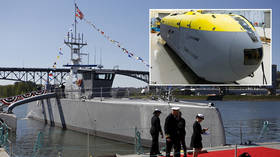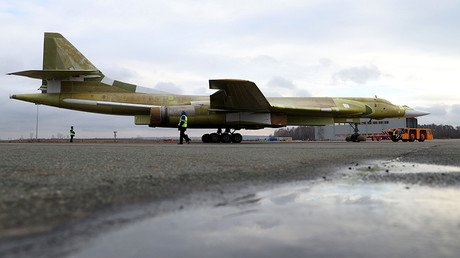Drone force to fight China: US Navy wants to build fleet of killer robot warships & subs

Coming in medium, large and X-large, the US Navy is requesting hundreds of millions of dollars to develop and procure a whole fleet of unmanned sea-faring vehicles in order to “meet future challenges” from countries like China.
In the event of a large-scale missile strike from a theoretical war-time opponent, Ronald O’Rourke, a naval expert with the Congressional Research Service, has proposed a novel solution: maritime drones, or “unmanned vehicles” (UVs).
UVs are one of several new capabilities—along with directed-energy weapons, hypersonic weapons, artificial intelligence, big data analytics and cyber capabilities—that the Navy says it is pursuing to meet emerging military challenges, particularly from China.
In a report published last week by the Congressional Research Service, O’Rourke argued that the robot armada will be quick to buy in large numbers, is not subject to fatigue like human crews running current ships, and is more expendable if destroyed in combat. The strategy is supposed to help the US meet the challenge as the Chinese navy ramps up its technical capacity and number of surface combatants.
Also on rt.com US is heading toward a looming maritime showdown… but not with IranAlthough the US Navy has already invested quite a bit in remote-controlled warships, the new request to drop $628.8 million for the 2020 fiscal year aims to completely reorganize and modernize the fleet based on the technology, moving away from traditional balance between surface ships and toward a remote-operated future. By 2024, the costs for the project are projected to hit a cool $4.5 billion.
The Navy wants to employ “accelerated acquisition strategies” for getting the large UVs into service by next year. The report also indicates that the service will tap weapons-maker Boeing to start churning out extra-large unmanned undersea vessels, or XLUUVs. The Navy already doled out $42 million to Boeing to develop the Orca robot submarine in February, and is now ready to place an order for 9 of them. The XLUUVs will be too large to be deployed from another submarine, and will need to be sent out from a dock.
#CyberpunkisNow Boeing is building the US Navy a giant robot submarine: Orca Extra-Large Unmanned Undersea Vehicle will prowl the sea autonomously for months at a time for “mine countermeasures, anti-submarine warfare, anti-surface warfare, electronic warfare & strike missions.” pic.twitter.com/m4PH0HlzRD
— ΜΔDΞRΔS (@hackermaderas) February 18, 2019
The US is readying to pump some extra cash into naval combat capacity amid a series of unsupported claims of Iranian attacks on international tankers, as well as tension in other regions. Earlier this month, the guided missile cruiser USS Chancellorsville almost collided with a Russian destroyer in the South China Sea, having been dispatched there to challenge Beijing’s territorial claims.
Also on rt.com WATCH Russian and US warships almost collide in East China Sea (PHOTO, VIDEO)Think your friends would be interested? Share this story!














